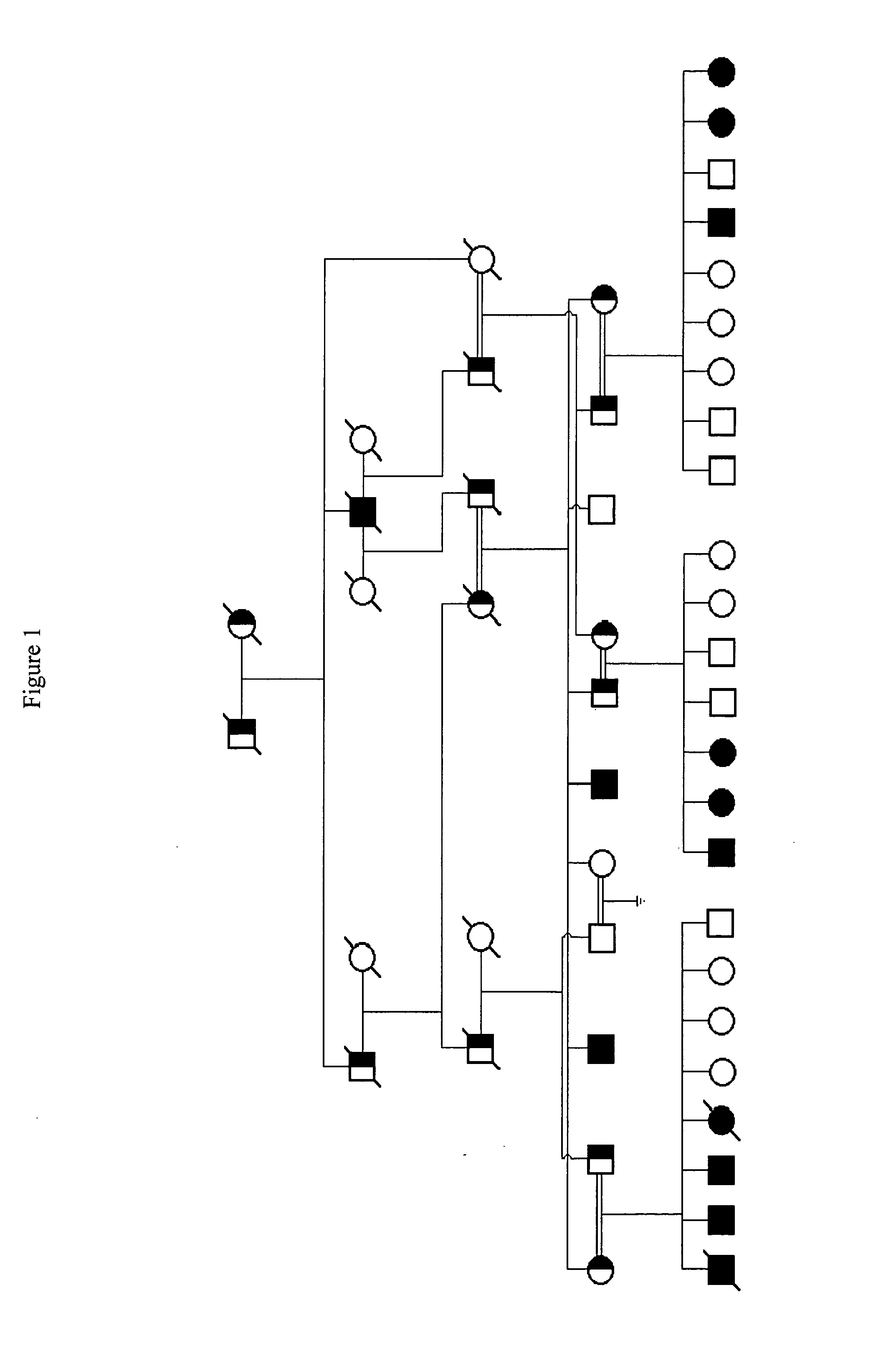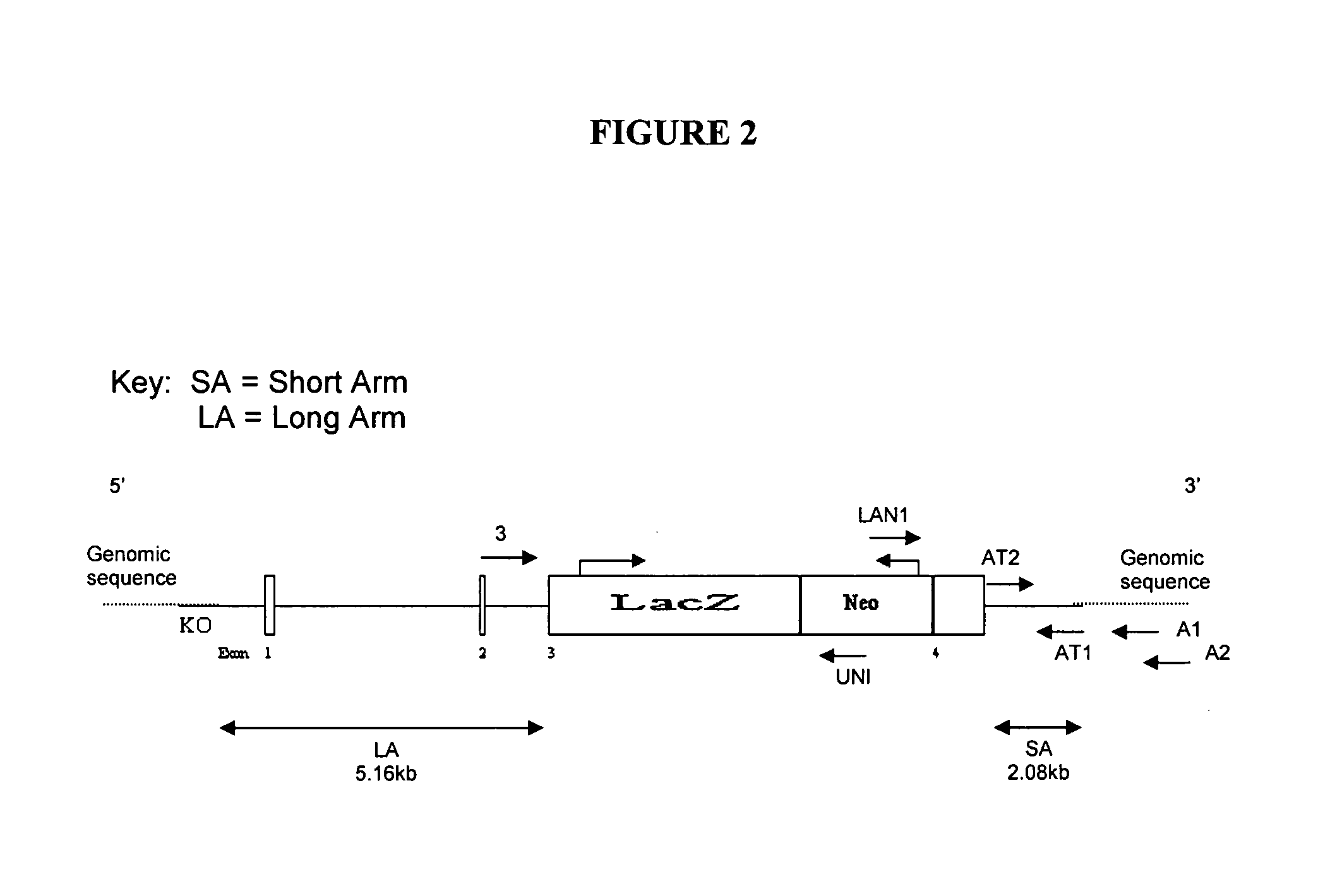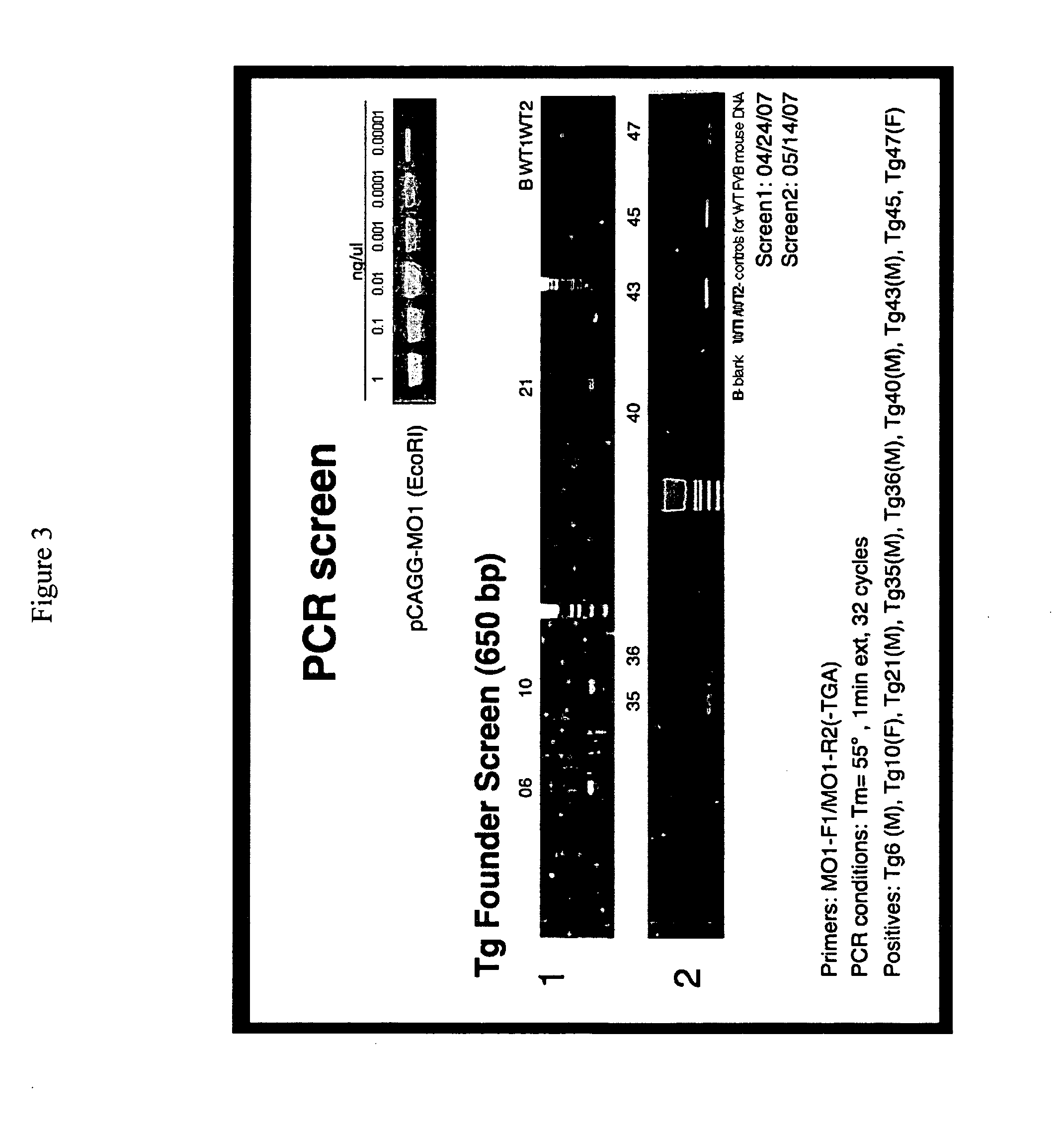MO-1, A Gene Associated With Morbid Obesity
a new type of gene and morbid obesity technology, applied in the field of morbid obesity gene and newly identified gene and gene product, can solve the problems of large number of genes within, large number of genes, and large number of genes, and achieve the effect of increasing, mo-1 activity, and decreasing the number of genes
- Summary
- Abstract
- Description
- Claims
- Application Information
AI Technical Summary
Benefits of technology
Problems solved by technology
Method used
Image
Examples
example 1
6.1 Example 1
Identification and Mapping of MO-1
[0208]This example describes mapping and sequencing of a gene associated with morbid obesity, type II diabetes heart disease, and hypertension.
[0209]A large, consanguineous multigenerational family with morbid obesity, type II diabetes, heart disease and hypertension was identified; FIG. 1 shows the lineage of this family. Detailed clinical data were obtained for all kindred members, including all 10 living affected individuals, shown in Table 3, below. Family members were known by history to have normal gestational birth weights but by age 2-3, affected children had increased BMIs. Affected adults had average BMIs ˜45. Three of 12 affected individuals had mild mental retardation but all had normal sexual development. In addition, three individuals had died of coronary artery disease / myocardial infarction, three of twelve affected family members were type II diabetics, and eleven of twelve had hypertension. Four of six individuals had a...
example 2
6.2 Example 2
Generation of a MO-1-Specific Monoclonal Antibody
[0214]This example describes the generation and isolation of a monoclonal antibody preparation that specifically binds the MO-1 polypeptide.
[0215]A monoclonal antibody was generated as follows. Mice were immunized with Keyhole Limplet Hemocyanin (KLH) conjugated with a peptide selected from the MO-1 polypeptide sequence (CTRAAEQLKNNPRH; SEQ ID NO.:11). Two booster immunizations were subsequently administered. Post-immunization serum was then used in an ELISA assay against free peptide to assess the monoclonal antibody response using conventional techniques.
[0216]Pre-immune serum was used as negative control (data not shown). Data from the ELISA assay is shown as Table 4, below.
TABLE 4Animal NumberDilution123451:10002.4311.8472.2331.0651.0151:30001.5531.2961.3260.5250.7851:90000.9150.7130.6790.2540.5841:2,70000.2450.3110.4770.2020.2851:8,10000.1690.2660.1930.1730.1571:24,30000.1190.1820.1610.1230.152Blank0.1060.1110.1230.1...
example 3
6.3 Example 3
Generation of a MO-1-Specific Polyclonal Antibody Preparation
[0217]This example describes the generation and isolation of a MO-1 polypeptide-specific polyclonal antibody preparation.
[0218]A MO-1 peptide comprising amino acids 133-153 of the MO-1 protein sequence (DPNFVYDIEVEFPQDDQLQSC; SEQ ID NO:21) was synthesized and conjugated with either KLH or ovalbumin as adjuvants and injected into rabbits. After confirming high titers by ELISA, the serum was then tested for its ability to detect V5-tagged-MO-1 by Western blotting techniques. Confirmatory blots were done using the V5 antibody. RbtA1783 from both the crude serum (1:1500 dil) and following affinity purification (1:200) reveals the presence of a highly prevalent band corresponding to the predicted size of MO-1 / V5. The same extract probed with an antibody recognizing the V5 tag also identified a similar band corresponding to the predicted size of MO-1 / V5.
PUM
| Property | Measurement | Unit |
|---|---|---|
| pH | aaaaa | aaaaa |
| body weight | aaaaa | aaaaa |
| total body weight | aaaaa | aaaaa |
Abstract
Description
Claims
Application Information
 Login to View More
Login to View More - R&D
- Intellectual Property
- Life Sciences
- Materials
- Tech Scout
- Unparalleled Data Quality
- Higher Quality Content
- 60% Fewer Hallucinations
Browse by: Latest US Patents, China's latest patents, Technical Efficacy Thesaurus, Application Domain, Technology Topic, Popular Technical Reports.
© 2025 PatSnap. All rights reserved.Legal|Privacy policy|Modern Slavery Act Transparency Statement|Sitemap|About US| Contact US: help@patsnap.com



